The future of screen printing is looking very bright! This printing method, famous for its bright colors and detailed designs, is changing with new tools and ideas. As technology grows, screen printing is becoming better and faster to meet what people want.
In the next few years, we will see more machines doing the work, eco-friendly practices, and smart technologies coming into play. Hybrid printing, which mixes digital and traditional methods, is becoming popular. Also, more people want personalized products made just for them.
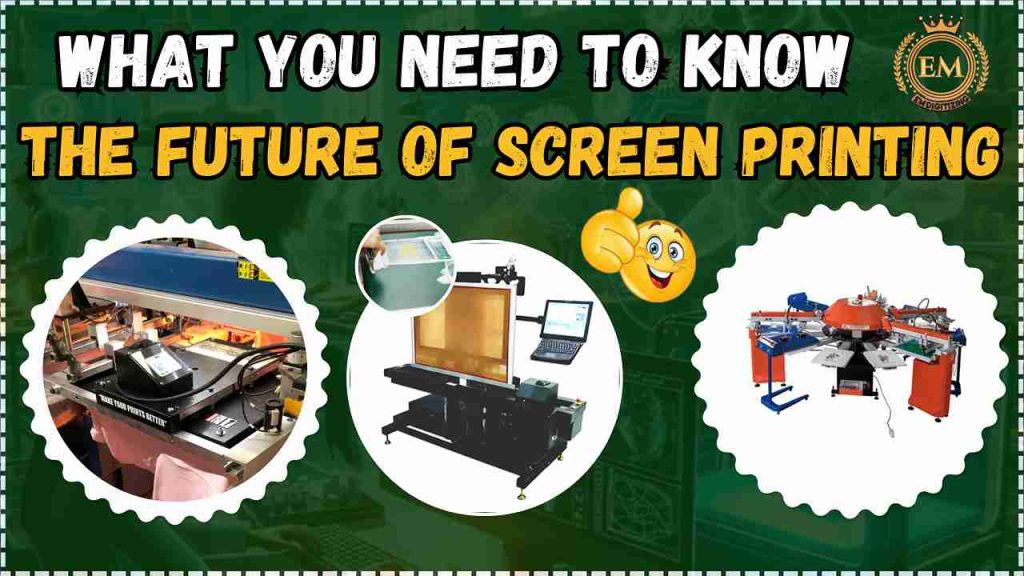
With these exciting changes, screen printing will continue to be an important part of creating art and designs, bringing fresh ideas and opportunities for artists and businesses everywhere. Let’s explore which factors will improve the future of printing!
The Future of Screen Printing: What You Need to Know
Future of Screen Printing: Key Trends Shaping the Industry
Here are important factors that are likely to define the screen printing industry future:
- Hybrid Printing Technology
- Automation and Robotics
- Sustainable Printing Practices
- Smart Inks
- Customization and Personalization
- AI and Design Optimization
- On-Demand Printing
1. Hybrid Printing Technology
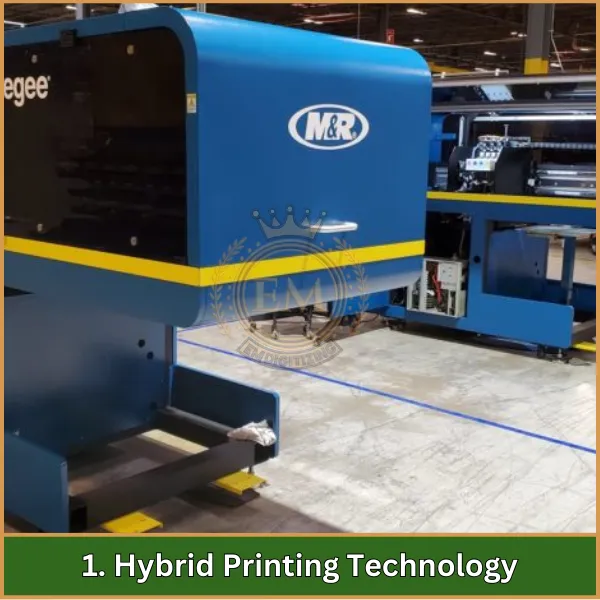
It will be shaped by hybrid methods that combine traditional screen printing with digital printing techniques. This allows for faster production times, greater precision, and the ability to work with a wider range of materials. Hybrid printing enables businesses to offer high-quality results while maintaining the unique qualities of screen printing.
2. Automation and Robotics
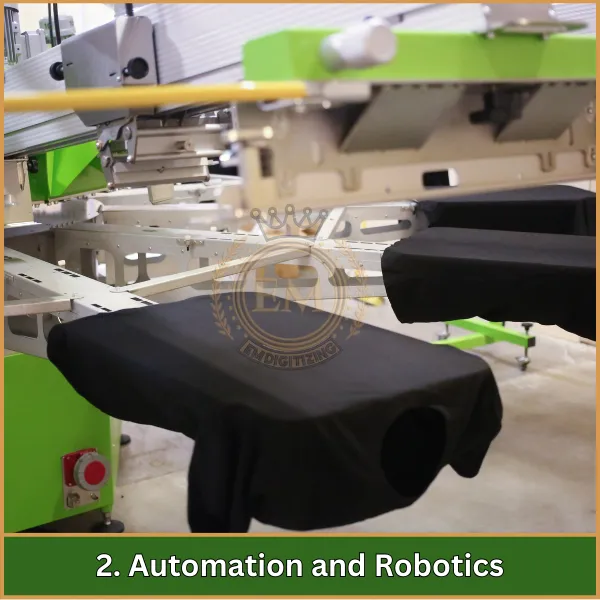
As automation becomes more advanced, the future of screen printing industry will see greater use of robotics in the printing process. Automated systems can handle tasks like screen setup, ink application, and even quality control, which will increase productivity and reduce manual labor. This trend will help businesses meet higher demands while ensuring consistent output.
3. Sustainable Printing Practices

With growing concerns over environmental impact, it is leaning toward more sustainable practices. The use of eco-friendly inks, such as water-based and biodegradable inks, is becoming popular. Companies are also adopting energy-efficient equipment and reducing waste through innovative recycling techniques, making screen printing more environmentally responsible.
4. Smart Inks
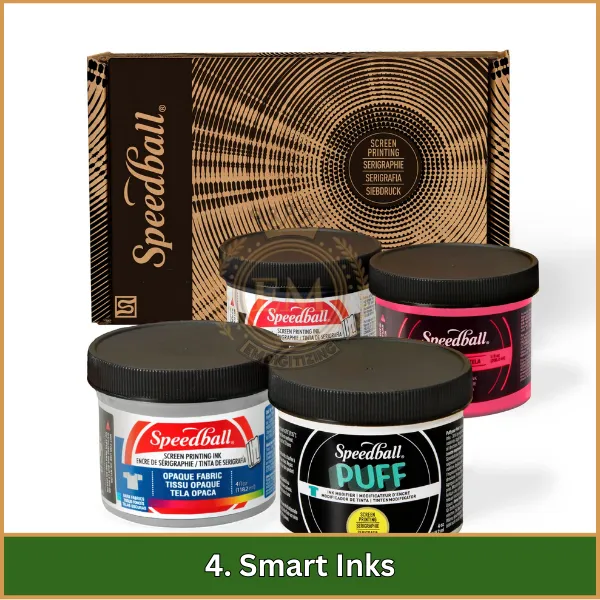
Innovations in ink technology are driving the future of screen printing technology. Smart inks, which can change color or texture when exposed to heat, light, or moisture, are gaining attention. These inks open up new possibilities for dynamic and interactive designs, particularly in the fashion, packaging, and advertising industries.
5. Customization and Personalization
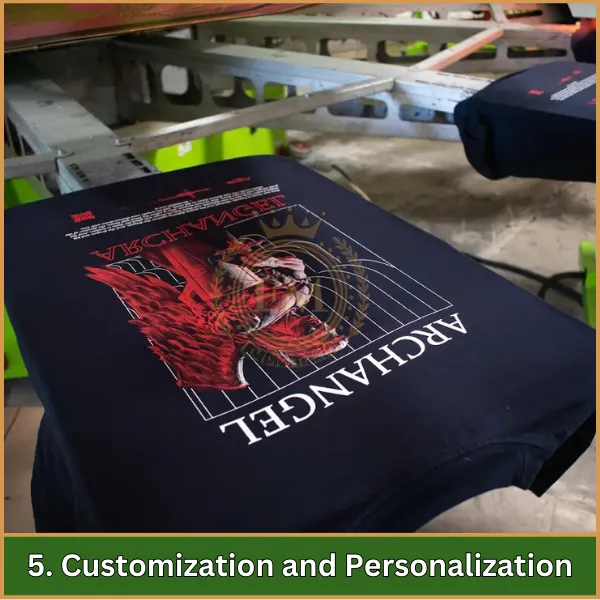
The demand for custom and personalized prints is growing, and the printing future will focus on meeting these needs. Businesses are offering more tailored services to customers who want unique designs for clothing, promotional materials, and other products. The ability to quickly produce small batches of personalized items is becoming a major trend in the screen printing industry.
6. AI and Design Optimization

Artificial Intelligence (AI) is expected to play a significant role in the future of screen printing industry. AI tools can optimize design layouts, predict color accuracy, and ensure precision during the printing process. By analyzing data, AI can also identify potential issues before they occur, helping businesses avoid costly errors and improving overall efficiency.
7. On-Demand Printing
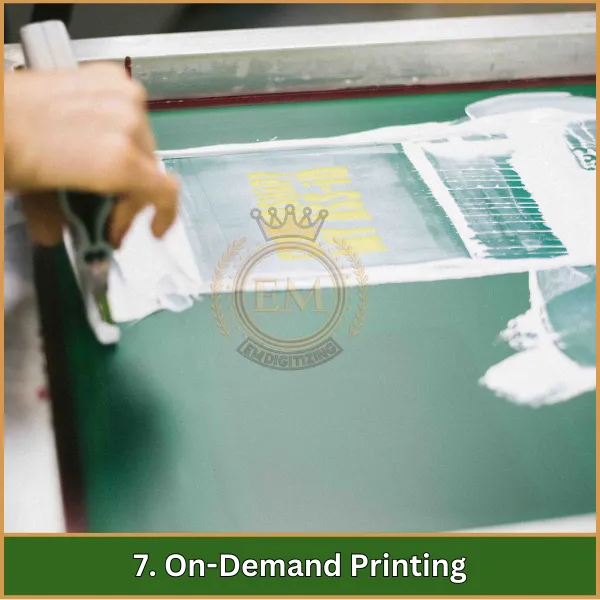
On-demand printing is another key trend in screen printing technology. This method allows companies to print only what is needed, reducing inventory costs and waste. On-demand printing is especially appealing to small businesses and independent designers who want to offer customized products without the financial burden of mass production.
Conclusion
To sum it up, the future of screen printing is looking really exciting! With new technologies and trends, this traditional printing method will keep getting better and more creative. We can expect more options for customization, faster machines, and eco-friendly practices that will help businesses and artists grow.
At EMdigitizing, we want to support you on this journey. Our vector art services can help you create amazing designs for your screen printing projects. We offer a fast turnaround time, affordable prices, and high-quality results that you can trust.
Plus, we have a special offer just for you—get 50% off your first order! Don’t miss out on this chance to bring your creative ideas to life. Choose EMdigitizing for all your vector art needs and watch your projects shine!
FAQs
The screen printing industry is experiencing steady growth, driven by demand in fashion, advertising, and electronics, adapting to technological advancements and eco-friendly practices.
Screen printing offers versatile applications from textiles and ceramics to electronics and signage, with possibilities expanding through innovation in inks and printing techniques.
Screen printing is not outdated; it remains popular for its durability, vibrancy, and suitability for high-volume runs, continuously evolving with new technologies.
Digital printing can be considered better than screen printing for small runs and complex designs due to its precision, efficiency, and lower setup costs, though the choice depends on project requirements.
